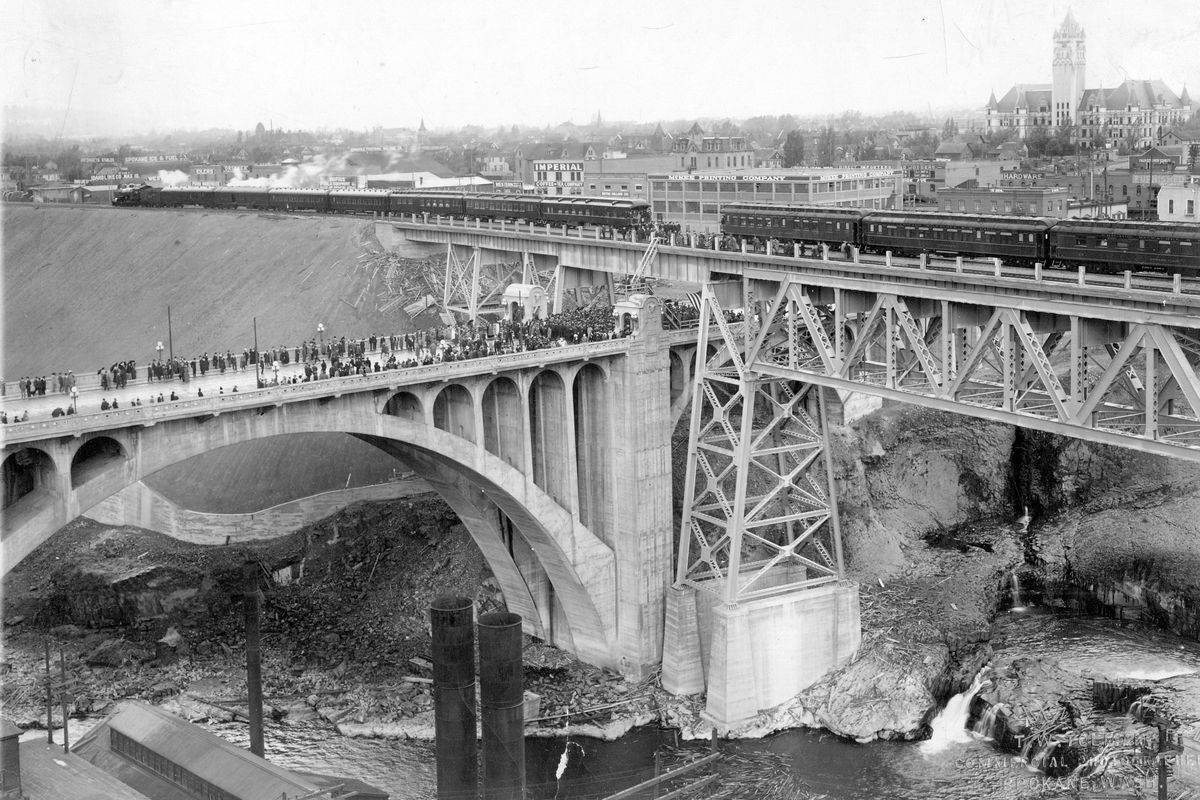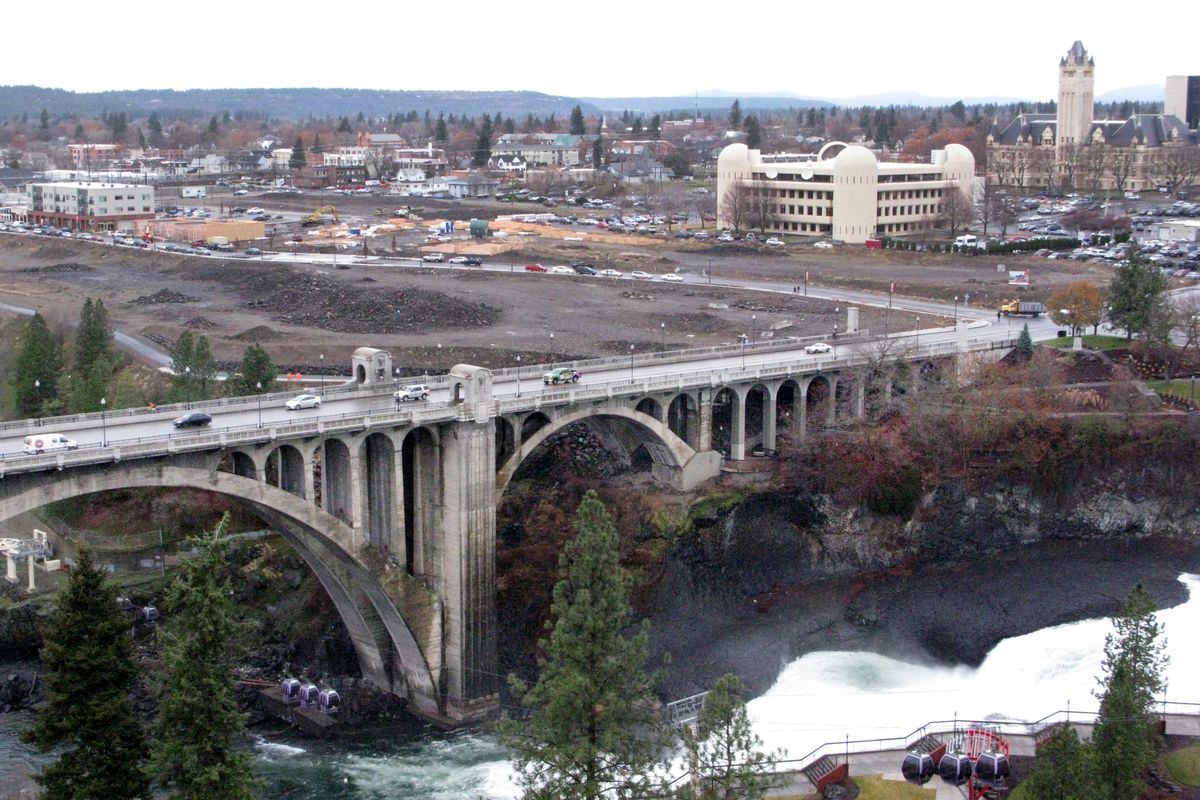Then and Now: Union Depot railroad bridge
Sept. 14, 1914: Spectators on the Monroe Street Bridge watch as railroad executives pound a ceremonial golden spike on the new rail bridge over Spokane Falls.
Edward Harriman, a notable railroad tycoon of the 19th century, was born in upstate New York in 1848. He became an errand boy on Wall Street at 14 and by the age of 22 was a member of the New York Stock Exchange.
In 1881, Harriman acquired the Lake Ontario Southern Railroad, reorganized it and sold it for a good profit. It was the first of many railway projects. He became a director of the Union Pacific in 1897, and a year later became chairman.
When rail promoter Robert Strahorn asked for financing for a Union Depot in Spokane, Harriman pledged the $400,000 to build it, but he wanted his involvement to be secret from rival James J. Hill of the Great Northern. The rumor mill called the mystery financier “The Sphynx.” Harriman’s backing led to the purchase and demolition of Spokane’s city hall, the construction of the Union Depot on Trent and an impressive rail bridge over the falls.
On Sept. 14, 1914, 1,000 people stood on the Monroe Street Bridge and watched executives of the Oregon-Washington Railroad and Navigation Co.; the Chicago, Milwaukee and St. Paul; and Union Pacific pound a ceremonial golden spike into a railroad tie. Two trains met in symbolic union. Thomas Griffith of the Spokane Chamber of Commerce waxed poetic. “What has thus been joined together, let no man put asunder,” he declared.
Harriman died in 1909 at age 62, shortly after getting involved in the project. When he died, Harriman controlled several railroads. He left his $100 million fortune to his wife, Mary, who gave much of it away through philanthropy. Naturalist John Muir, who had joined Harriman on expeditions to Alaska, said, “In almost every way, he was a man to admire.”
The railroad bridge was removed, along with the depot, in advance of Expo ’74.
– Jesse Tinsley
